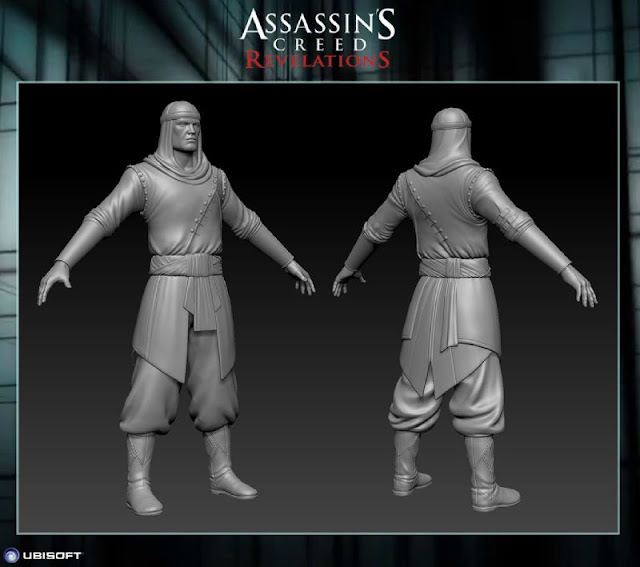It was a privilege following the development of computer graphics in the way I did. The developments to graphics lead me to appreciate true nature in a new way. I didn't think about the detail of the geometry of real buildings before it was talked about in videogames - and certainly not the peculiar way light hits you skin - penetrates and spreads in your body, and reflects back. That's how you can see someone blushing - you see the rush of blood under the skin.
The beauty of modern computer games can parallel that of reality. But the complexity of modern technology hides the inner beauty of their worlds composition very well. What i will do today Is try to reveal how the graphical aspects of these computer worlds are put together. This knowledge will hopefully help you to appreciate not only the marvel that is a modern computer- game - but also some of the superb phenomenal of the real world.
Actually I hate to say "the real world" - which implies that digital landscapes are somehow un- real. They are not; they are as real as the natural world. The difference is that the digital world is made- real, or realised, in a computer. And compared to nature is harder to visit, simpler and intelligently designed.
One might say that its ontology sits on top of the ontology of the outside world. Today we will dig into the depths of this digital layer - but not so far down that we get into real physics.
This image is from Dear Esther. In it you spend your time walking around accompanied by the voice of your own character. This image consists of a few things. A skybox - which is the edge the geometry. A wireframe that makes up the geometry consisting of thousands of triangles named polygons. On top of that is a flat surface, which is ten textured. Textures are images on top of the geometry. The grass is not 3D - but only a 2D surface spread around the landscape. Surfaces are lighted and shadows are calculated.
It can be difficult to understand just from looking at a finished model what goes into it. Let's have a look under the hood.
 |
| Dear Esther |
This is a wireframe model of a games environment. You can just about make out a door and some fountain or something in the middle. This is what a video game looks like in it's simplest form. The triangles you see are polygons. The form the shape of the geometry. The polygon count - how many there are at the screen at the same time - has gone up immensely over the years. Old models used to look blocky - now things are generally quite good looking.
This grid is then overlayed with a grey plane. This plane can then be lighted and shaded. This is a picture of an enemy model from the game Assassin's Creed: Revelations.
As you can see the face is much more detailed than the rest of his body. Models in general are more detailed than surrounding areas.
After the details are there - one needs to give the some textures. This is an image showing the change from untextured to textured.
A similar process happens for all environments in a game.
When the models are finished they have to be animated. This model of Copernicus would have running and fighting animations. His cape would be animated to look like it behaved like cloth. Much of computer graphics improvement in games over the years can be attributed to good middleware - and example of which is companies specialising ing making cloth animations for gaming studios. Another is SpeedTree - which makes algorithms for making trees.
Wireframe models can get incredibly complex. Have a look at this city from Assassin's Creed.
Because of the huge complexity of these models it is impossible for computers to include all that detail at the same time. Buildings that are further away lack much of the detail that the close buildings have. When you run towards the buildings details pop- into existence. Normally you don't notice this. People for some reason don't notice these kinds of change very well. But at other times it becomes very noticeable. Then you would say that the game suffers from "pop- ins".
Lighting is a very interesting area currently under development. Light comes from more than bulbs - it is also reflected, scatters unevenly, hits dust particles in the sun - is emitted from warm objects and can also scatter in translucent things like clouds or jade. To see what I mean take a look at the development video beneath.
I hope this has helped you gain a rudimentary understanding of video game graphics. Now go explore for yourself!




